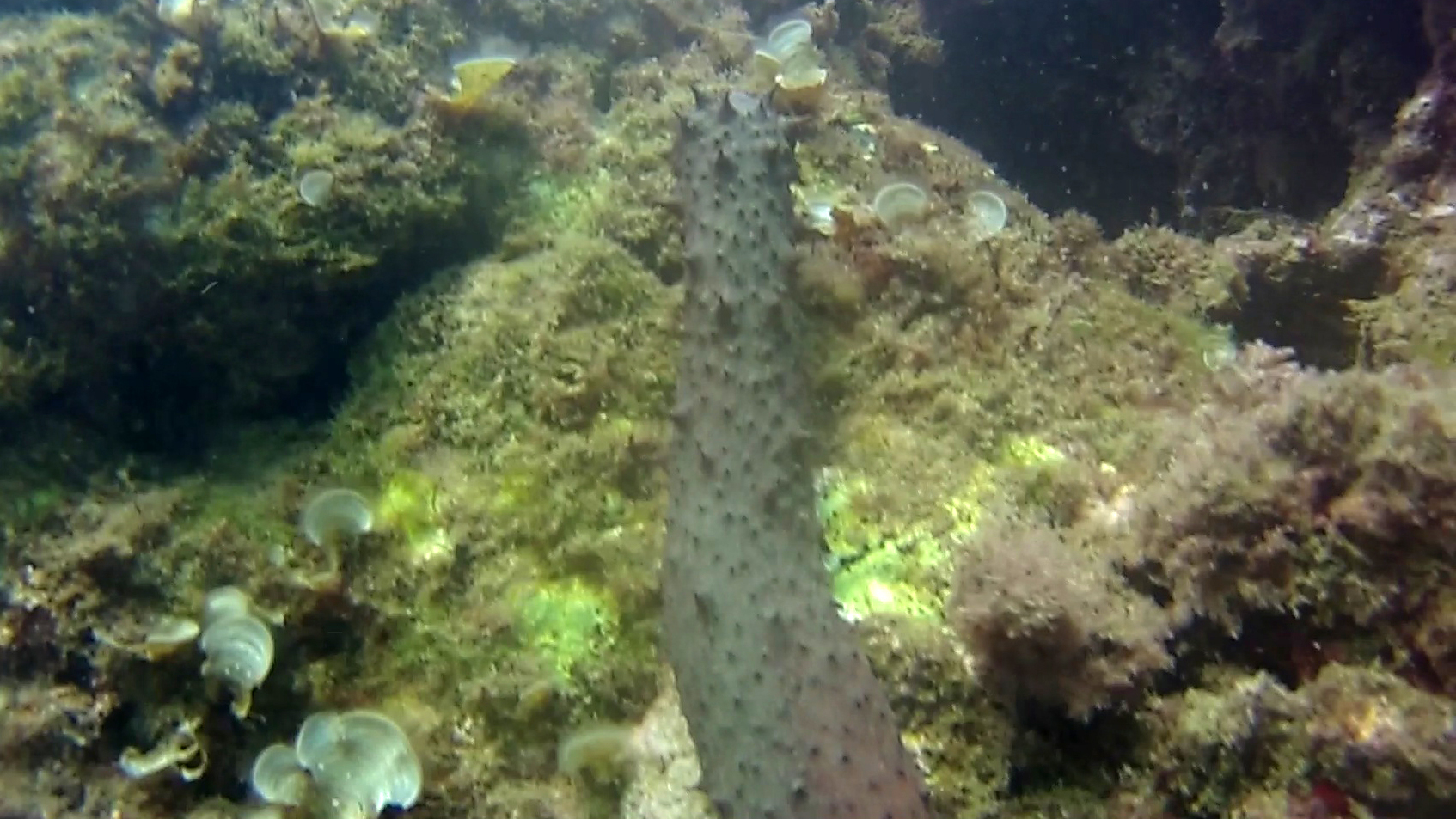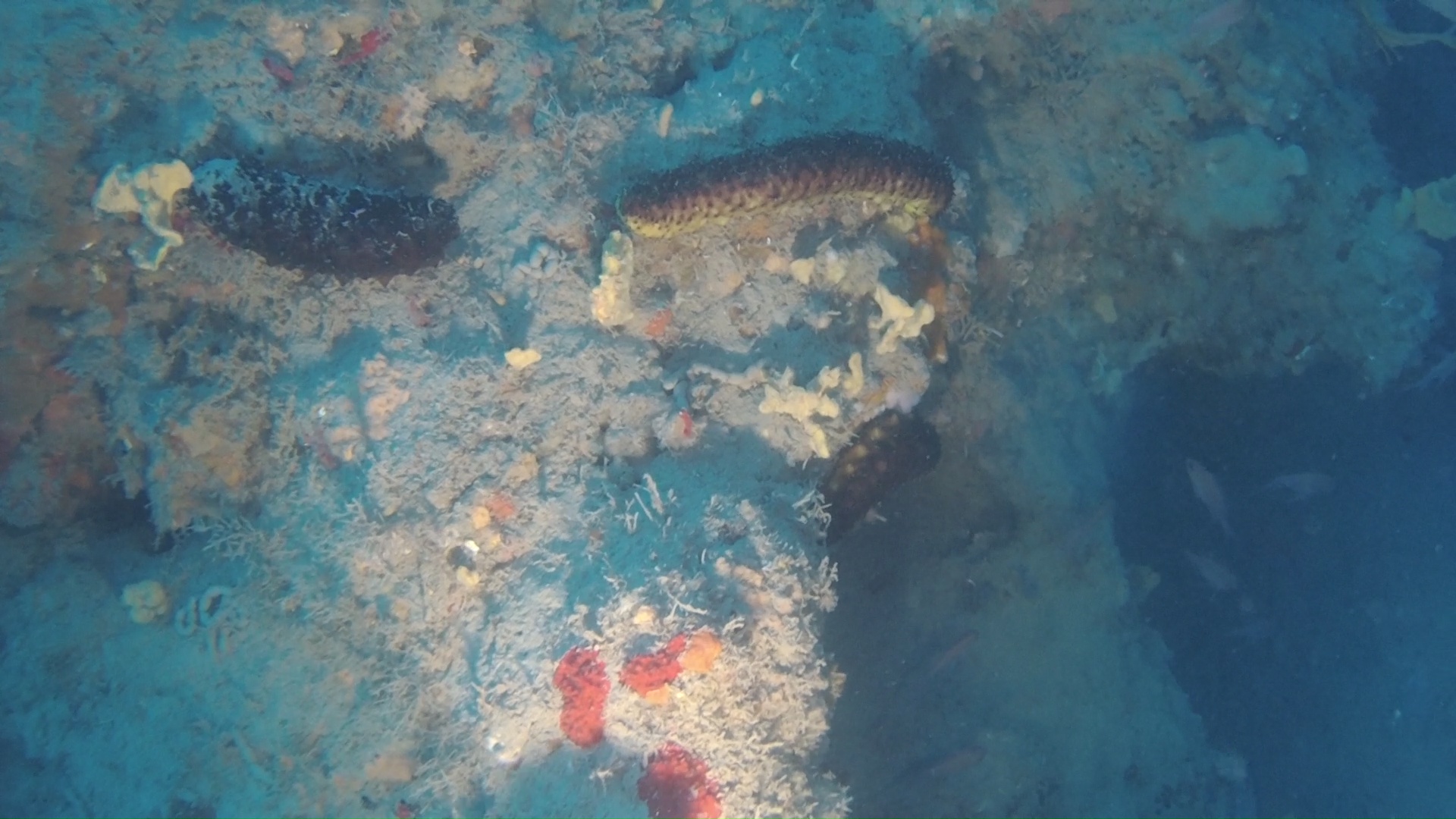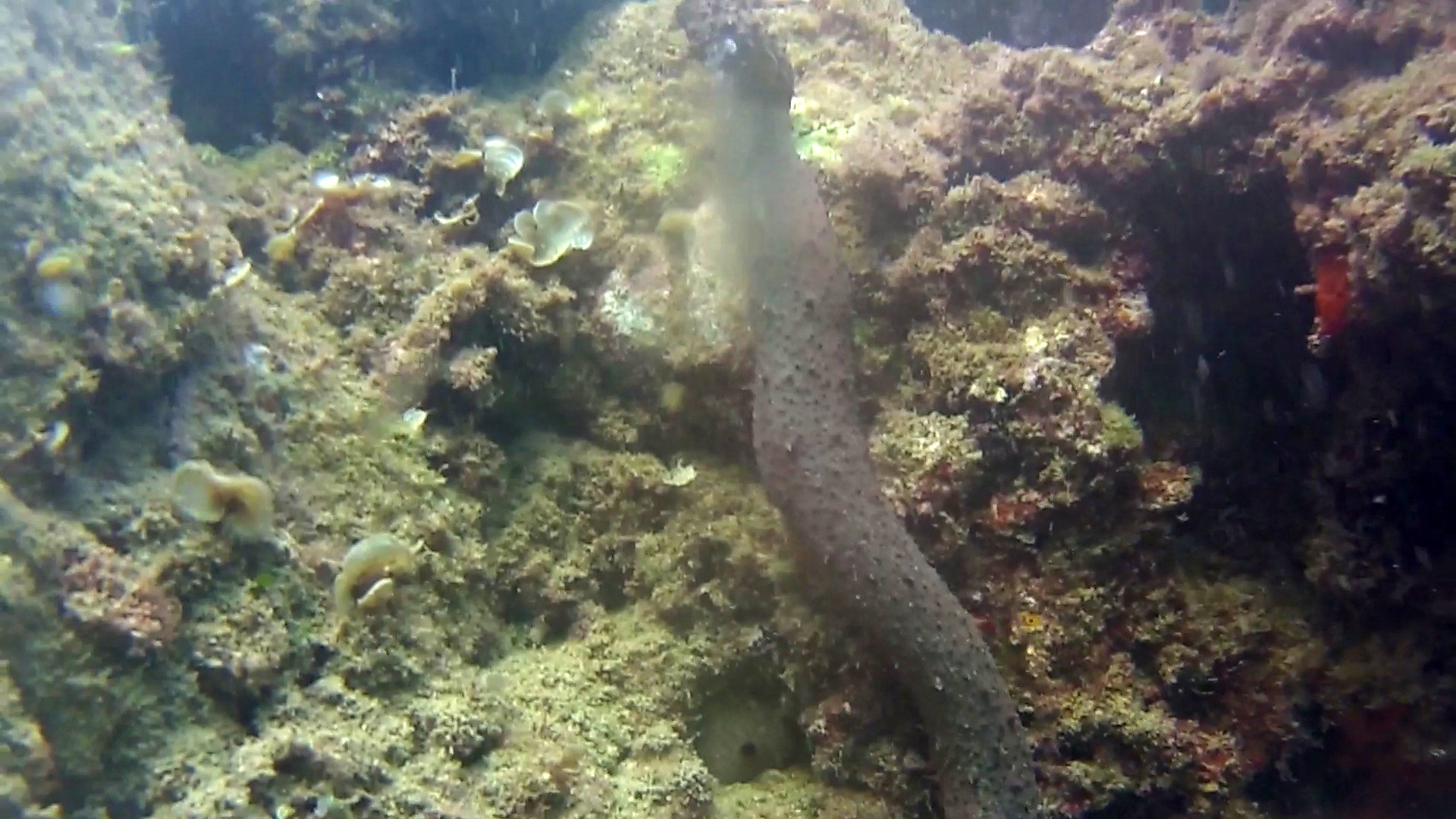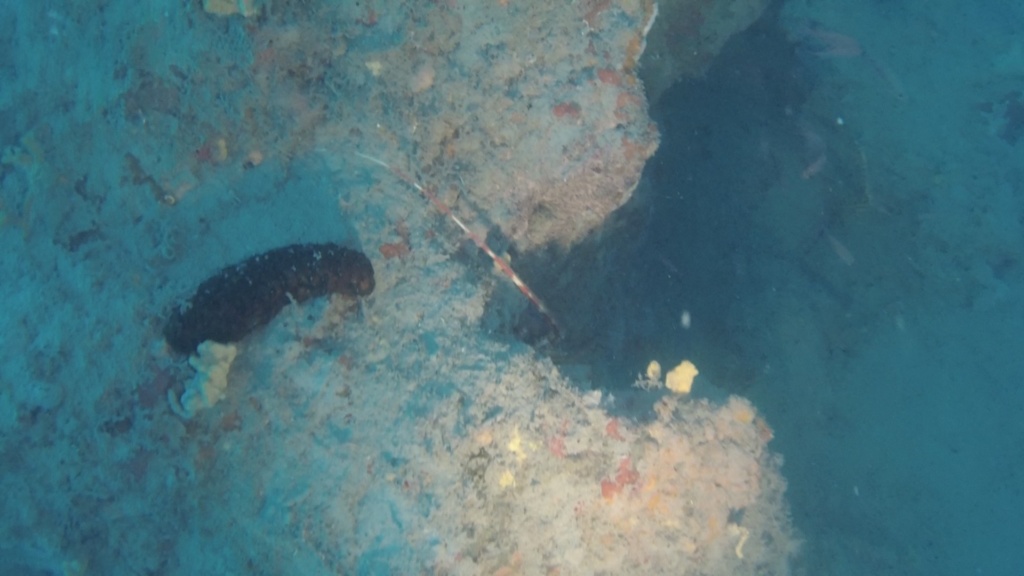Oloturia - Holothuria tubulosa
The sea cucumbers are Echinoderms belonging to the Holothuroidea class. They are very widespread in the Mediterranean Sea and live in the seabed mixed with sand and rock but also in the muddy seabed. We can find them from a few inches deep to important depths. Oloturia Holothuroidea echinodermi echinoderms intotheblue.it

The elongated body makes this animal look like a “cucumber“; At one end we find the mouth apparatus and in the other we find the last part of the intestine i.e. the cloaca. In the lower face there are small stalks that allow the slow movement on the bottom.
Oloturia Holothuroidea echinodermi echinoderms intotheblue.it
Sea cucumbers are feed of animal and vegetable microorganisms that capture swallowing the sand, the mud or the pebbles found on the bottom absorbing the organic material and expelling the rest of the swallowed material.
The sea cucumbers of the Mediterranean have a length that hardly exceeds 30-35 cm. What particular their ability to regenerate; In fact if they are divided into two or three parts each of them is able to recompose the whole animal with all its characteristics.

Biology Reproduction
Holothuria tubulosa is dioecious, with each individual being either male or female but with no difference between them in external appearance. In a study in the Mediterranean Sea, a mass spawning event was observed in the afternoons of the two days in August 2003 that coincided with the full moon. Large numbers of mature individuals simultaneously adopted the spawning position, rearing their anterior ends up and leaving only the hind third of their body in contact with the seabed.
Oloturia Holothuroidea echinodermi echinoderms intotheblue.it

This raises their genital orifices, situated just below the mouth, clear of the substrate to allow for maximum dispersal of the gametes. First, some individuals, believed to be males, emitted a whitish fluid which gradually dispersed in the surrounding water. Next, a smaller number of individuals, believed to be female, emitted a more viscous fluid, perhaps in response to the release of the male gametes. Each release lasted about 30 minutes. The necessary conditions for spawning seemed to be a full moon and a sea temperature of about 25 °C (77 °F).

https://it.wikipedia.org/wiki/Holothuria_tubulosa
https://www.intotheblue.it/2019/02/11/oloturia-maculata-holothuria-sanctori/

